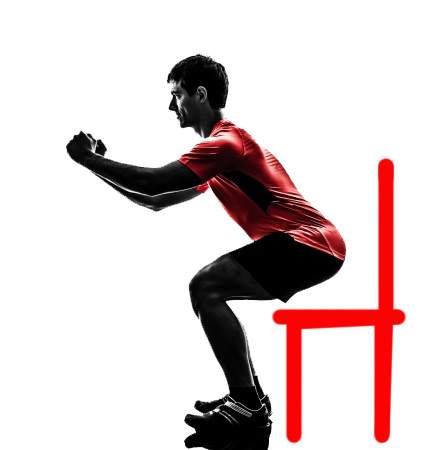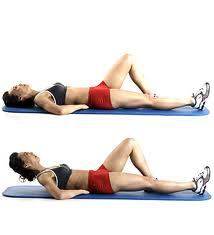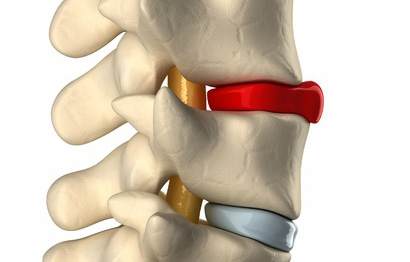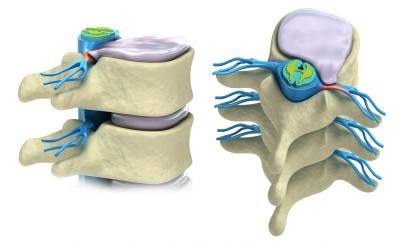Core Exercises: 7 Essential Exercises for Preventing Back Pain

Core exercises can be a great tool in preventing back pain. In this article we explore proactive core exercises to help chronic lower back discomfort.
A recent review conducted by the Journal of the American Medical Association (JAMA), spearheaded by researcher Steffens[1], delved into the realm of optimal exercises for preventing back pain.
Lumbar Degenerative Disc Disease Exercises: A Guide for Relief
Steffens’ findings underscore the effectiveness of targeted core exercises in reducing the risk of future back pain by a significant 35% over the subsequent 12 months. Moreover, integrating educational components into your back health regimen can contribute to an additional risk reduction of approximately 50%. Notably, in workplace scenarios, these interventions manifested as an impressive 78% decrease in sick leave and work loss attributed to lower back pain.

Unfortunately, if you stop the core exercises your back pain will come back. In other words, you need to keep doing the exercises to prevent back pain. This should encourage you to make exercise a part of your lifestyle to prevent back pain.
So now you know that core exercises to prevent back pain are effective, what are the best exercises to prevent back pain? I’ll get to that in a minute.
Concussion Rehabilitation: How To Return To Sport
Some of you might be saying I don’t like to core exercise I will just take the education part of it and not the exercises. Steffens the researcher who reviewed the research would probably tell you off. He found out that education alone is not enough. You can do just the exercises which helps up to 35% but education alone doesn’t help prevent back pain. There is no easy, passive way to just go to your office job, lead a sedentary life and prevent back pain.
Continuing Your Exercises
The biggest problem you will have is continuing your core exercises when there is no pain. Why should you do them when there is no pain? Simple, doing the exercises helps prevent back pain. One of the studies in the review looked at how support and encouragement had a great effect on people doing exercises to prevent back pain. By doing regular follow-ups there was a motivational effect and so people did the exercises.
Without follow-ups in other studies, patients did not do their exercises to prevent back pain and thus had more recurrences and more time off work.
Best Exercises To Prevent Back Pain
While I am going to give you some exercises here, please don’t conclude that these are the only exercises to prevent back pain.
#1 Best Core Exercises To Prevent Back Pain

- Start on your hands and knees, ensuring your wrists are directly under your shoulders and your knees are under your hips.
- Engage your core muscles to maintain a stable spine.
- Extend your right arm straight in front of you while simultaneously extending your left leg straight behind you. Keep your hips level.
- Reach through your fingertips and lengthen through your heel to create a straight line from your fingertips to your heel.
- Hold the extended position for a moment, emphasizing balance and stability.
- Slowly return your arm and leg to the starting position, maintaining control.
- Repeat the movement on the opposite side, extending your left arm and right leg.
- Continue to alternate between sides for a specific number of repetitions or a set duration.
- Focus on keeping your core engaged throughout the exercise to stabilize your spine.
- Include the bird dog exercise in your core workout routine, gradually increasing the difficulty as your balance and coordination improve.
Remember to perform the bird dog with controlled movements, avoiding excessive arching or rounding of the back.
#2. Best Core Exercises To Prevent Back Pain: Curl-up

- Lie on your back on a comfortable surface such as a mat.
- Bend your knees, keeping your feet flat on the ground and hip-width apart.
- Place your hands either crossed over your chest or gently supporting your head, avoiding pulling on your neck.
- Engage your core muscles by drawing your navel toward your spine.
- Slowly lift your head, shoulders, and upper back off the ground, aiming to create a gentle curling motion.
- Keep your lower back on the ground to avoid excessive arching.
- Exhale as you lift and inhale as you lower back down to the starting position.
- Perform the curl-up for a specific number of repetitions or a set duration.
- Avoid straining your neck; focus on using your abdominal muscles to lift.
- Include the curl-up in your core workout routine, gradually increasing intensity as your abdominal strength improves.
Remember to perform the curl-up with controlled movements and proper form
#3. Best Core Exercises To Prevent Back Pain: Chair Squats

- Stand in front of a chair, adopting the posture as if you intend to sit on it.
- Position your feet slightly more outward than your knees.
- Ensure your buttocks protrudes outward, initiating the movement.
- Gradually lower your buttocks until you make contact with the chair.
- Repeat this action for three sets of ten repetitions each.
- As your strength improves, progress to performing the exercise without the chair, descending until your knees are bent at a 90-degree angle.
#4. Best Core Exercises To Prevent Back Pain: Stir the Pot

- Start in a forearm plank position with your forearms on the ground and elbows directly below your shoulders. Extend your legs straight, creating a straight line from head to heels.
- Move your forearms in a circular motion, as if stirring a pot. Begin with small controlled circles and gradually increase the size.
- Maintain a stable plank position throughout, avoiding sagging hips or piking upward. Engage your core to prevent excessive arching in the lower back.
- Breathe steadily and consistently, avoiding breath-holding.
- Perform the stirring motion for a specific duration or a set number of repetitions.
- If needed, modify by dropping to your knees while keeping a straight line from head to knees.
- Include Stir the Pot in your core workout routine, aiming for 2-3 sets. Increase the duration or repetitions as your core strength improves.
Remember to focus on proper form to maximize effectiveness and prevent injury. Adjust the size of circles based on your comfort and gradually progress as you become more familiar with the exercise.
#5. Best Exercises To Prevent Back Pain:

Begin by lying on your side with your elbow directly beneath your shoulder.- Stack your legs on top of each other and straighten your body, creating a straight line from your head to your heels.
- Lift your hips off the ground, supporting your weight on your forearm and the side of your bottom foot.
- Engage your core muscles and keep your body in a straight line; avoid letting your hips sag or pike upward.
- Extend your free arm upward, reaching toward the ceiling or placing it on your hip for stability.
- Hold the side plank position for a specific duration, focusing on maintaining proper form.
- Lower your hips back to the ground with control.
- Perform the side plank on the opposite side, switching the supporting elbow and stacking your legs.
- Continue to alternate between sides for a balanced workout.
- Include the side plank exercise in your core routine, gradually increasing the duration as your strength improves.
Remember to maintain proper alignment and avoid excessive strain on your lower back.
#6. Best Exercises To Prevent Back Pain:

- Begin by lying on your stomach on a mat or comfortable surface.
- Position your elbows directly beneath your shoulders, with your forearms on the ground.
- Curl your toes under and lift your body off the ground, creating a straight line from your head to your heels.
- Engage your core muscles to maintain a stable and straight plank position.
- Keep your elbows in line with your shoulders, and avoid letting your hips sag or pike upward.
- Hold the front plank position for a specific duration, focusing on maintaining proper form and breathing steadily.
- Lower your body back to the ground with control.
- Include the front plank exercise in your core workout routine, gradually increasing the duration as your strength improves.
Remember to keep your body in a straight line and avoid overarching or rounding your back.
#7. Best Exercises To Prevent Back Pain:

- Begin by lying on your back on a mat or comfortable surface.
- Bend your knees and place your feet flat on the ground, hip-width apart.
- Position your arms alongside your body, with your palms facing down.
- Engage your core muscles and press through your heels to lift your hips toward the ceiling.
- Continue lifting until your body forms a straight line from your shoulders to your knees.
- Squeeze your glutes at the top of the bridge position.
- Hold the supine bridge for a specific duration, focusing on maintaining a straight line and avoiding excessive arching in your lower back.
- Lower your hips back to the ground with control.
- Repeat the exercise for a specific number of repetitions or include it in your core workout routine.
- Gradually increase the intensity by holding the bridge for longer durations or incorporating variations.
Remember to perform the supine bridge with controlled movements and proper form.
Problems With Systemic Reviews
A systematic review involves a comprehensive analysis of numerous research trials to distill the findings down to a select few, focusing on the most robust and reliable studies. It’s akin to sifting through a multitude of research trials on a particular topic, such as evaluating whether soybeans are beneficial or harmful. By filtering out flawed or biased studies, the goal is to arrive at a more accurate and trustworthy conclusion.
In the context of low back pain, researcher Even Steffens acknowledges that the evidence supporting the effectiveness of exercises to prevent back pain is currently rated as low to very low. This implies that the conclusion is based on the limited number of studies included in the review. If two new studies with opposing findings were to emerge, it could potentially lead to a different conclusion, as the additional evidence may alter the overall assessment of the effectiveness of exercises in preventing back pain.
Tell us what you think in the comments below and like us on Facebook. This Toronto Downtown Chiropractor will answer all questions in the comments section.
References
1 Steffens D, Maher CG, Pereira LSM et al. (2016) Prevention of Low-Back Pain, JAMA Intern Med. doi 10.1001/jamainternmed.2015.7431. Published online January 11, 2016. 2 Carey TS, Freburger JK (2016) Exercise and the Preventi








